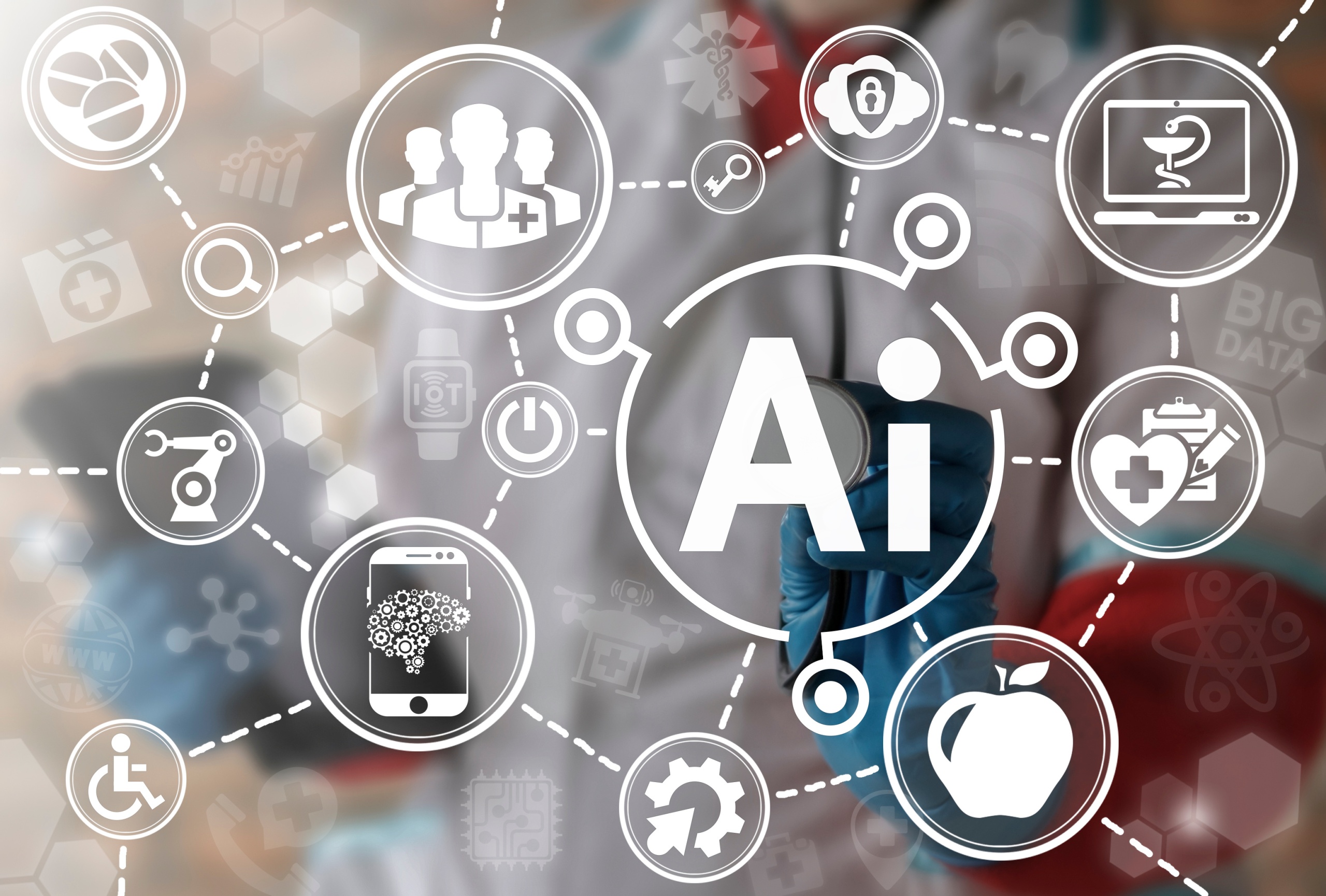Surgery has come a long way since its early days, and advances in technology have played a significant role in this evolution. Artificial intelligence (AI) is the latest technological breakthrough that is set to revolutionize the operating room. AI has the potential to improve patient outcomes, streamline surgical processes, and make surgeries safer and more efficient. In this article, we will discuss five key areas where AI is making a significant impact in the world of surgery.
Robotic Surgery
Robotic surgery (*1) is one of the most well-known applications of AI in the operating room. The use of robots in surgeries has been increasing in popularity over the last decade, and the da Vinci Surgical System is one of the most well-known examples of this technology. This system consists of a surgeon’s console and a patient-side robot that is controlled by the surgeon. The robot’s small, precise movements and 3D visualization capabilities allow for more accurate and minimally invasive procedures.
Surgical robots can precisely regulate the trajectory, depth, and speed of their motions. They are particularly well-suited for treatments that require the same, repetitive movements since they can work without tiring. Robots can also remain absolutely motionless for an extended period of time and even go places that traditional tools cannot.
In the operating room, experience is priceless. The longer doctors can continue to operate, the better- although surgical treatments can be physically demanding. A lack of motor abilities might impair the skills and knowledge acquired by surgeons over their careers. Collaborative robots can assist in reducing the impact of hand tremors and avoiding unintentional or accidental motions.
Image-Guided Surgery
Medical imaging plays a crucial role in surgical procedures, and AI is making it even more valuable. Image-guided surgery uses medical imaging, such as CT scans and MRI scans, in combination with AI algorithms to guide and improve surgical procedures. AI algorithms can help identify and track critical structures, such as blood vessels, during surgery, reducing the risk of complications and improving patient outcomes.
The Image-Guided Surgery (IGS) system (*2) is one of the most well recognized surgical methods, from simple biopsy to sophisticated procedure. IGS systems function in the same way that automobiles use Global Positioning Satellites (GPS). In the next years, it will be impossible to picture surgery without the usage of IGS devices, just as it is impossible to envisage routing without a car or a mobile GPS today. IGS tracks surgical tools in real time and displays them in the precise placement and orientation on pre-operative images to directly guide the process. Doctors can use this technology to precisely locate diseased tissue and related anatomical structures during a less invasive and safer real-time surgery. As a result, it has become a recognized standard of surgery in a wide range of surgical disciplines, including neurosurgery, spine surgery, orthopedic surgery, ears, nose, throat surgery, and craniomaxillofacial surgery.
Surgical Planning and Simulation
AI is also being used to plan and simulate surgeries (*3), which can help enhance precision and minimize risks. Surgical planning software can use patient-specific information, such as medical images, to create 3D models of the patient’s anatomy. These models can be used to plan the surgery and simulate different surgical approaches, allowing surgeons to make informed decisions and improve patient outcomes.
Although it is still in its early stages of widespread clinical application, AI technology allows for personal evaluation and feedback in surgical training simulations. Several types of surgical visualization technologies are presently used for anatomical instruction and pre-surgical assessment, and they all rely on distinct AI algorithms. While clinical examples and technology findings attesting to the efficacy of AI-supported surgical simulators are encouraging, the challenges to widespread commercialization of such devices and software remain complicated and multifaceted. High implementation and production costs, a scarcity of reports demonstrating such technology’s superiority, and inherent technological constraints remain at the forefront.
Intelligent Surgical Instruments
Another area where AI is making a significant impact in surgery is in the development of intelligent surgical instruments (*4). These instruments can be equipped with sensors and algorithms that assist surgeons in real-time during procedures. For example, force-sensing instruments can provide feedback to the surgeon on the amount of force they are applying during a procedure, reducing the risk of complications.
Continuous surgical training and feedback can improve surgical skills, which can lower bad outcomes while performing an operation. Researchers now have the capabilities to assess surgical instrument motion to discern surgeons’ levels of technical skill, thanks to the advancement of new technology. Surgical skill evaluation takes time and is open to subjective judgment. To offer surgical navigation, the surgical instrument recognition and tracking algorithm analyzes the picture taken by the surgical robotic endoscope and extracts the movement and orientation information of a surgical instrument. This data can be used to classify raw surgical video recordings, which are then utilized to create an action space for surgical skill evaluations. The detection and tracking of instruments is a difficult problem in MIS, including robot-assisted surgeries, but vision-based techniques offer potential solutions with minimum hardware integration needs.
Machine Learning in Surgical Outcome Predictions
Finally, machine learning (*5) algorithms are being used to predict surgical outcomes and improve patient care. By analyzing large amounts of patient data, machine learning algorithms can identify patterns and make predictions about the most likely outcomes of a procedure. This information can then be used by
Machine learning is a subfield of artificial intelligence that involves the development of algorithms that can learn from data and make predictions or decisions. In spinal surgery, machine learning can be applied in various stages, including diagnosis, treatment selection, surgical planning, and postoperative monitoring. One of the key benefits of machine learning in surgery is the ability to analyze large amounts of data and provide more accurate and consistent diagnoses. This can help physicians make informed decisions about the best course of treatment for each patient, improving outcomes and reducing the risk of complications.
In addition, machine learning can also be used to develop predictive models for surgical outcomes. These models can take into account a patient’s medical history, imaging data, and other relevant information to predict the likelihood of a successful outcome and help physicians make informed decisions about the most appropriate surgical approach. Another important application of machine learning in surgery is in the development of robotic surgical systems. These systems use machine learning algorithms to perform spinal surgeries with greater precision and accuracy, reducing the risk of complications and improving outcomes.
Machine learning can also be used to enhance postoperative monitoring by helping to detect any postoperative complications and allow physicians to take appropriate action to prevent further damage and improve outcomes. Machine learning can also be used to develop personalized rehabilitation plans for post-surgery patients. By analyzing patient data and tracking their progress, machine learning algorithms can optimize rehabilitation programs to help patients recover more quickly and effectively.
Conclusion
AI has been making remarkable progress in revolutionizing the field of surgery and its impact can already be seen in many areas. The integration of AI technology in surgery has brought about a new level of precision and accuracy, leading to better outcomes for patients. The use of robotics in surgery has made surgeries less invasive and less traumatic, reducing recovery times and minimizing the risk of complications. The development of intelligent surgical instruments has made surgeries more efficient and streamlined, leading to faster and more effective procedures.
AI is helping to address some of the most pressing challenges facing the healthcare industry today, such as the shortage of skilled surgeons, and the increasing demand for surgeries. The use of AI algorithms and machine learning models allows for a more accurate and personalized approach to patient care, enabling faster diagnoses and better treatment options.
As AI continues to evolve, it is likely to play an even greater role in the future of surgery. AI technologies such as computer vision and deep learning are expected to bring new levels of accuracy, speed, and reliability to surgeries, leading to improved outcomes for patients. In addition, AI may also be used to enhance the training of new surgeons, allowing them to learn from the expertise of experienced surgeons and develop the skills needed to perform complex surgeries with greater ease and confidence.
In conclusion, AI has already made a significant impact in the field of surgery and its potential for further advancements is vast. With its ability to improve patient outcomes, increase efficiency, and enhance surgical training, the future of AI in surgery is promising and holds great promise for the future of healthcare.
Sources:
(*2) Research Gate- https://www.researchgate.net/publication/356254308_Image-Guided_Surgery_and_Its_Future_with_the_Artificial_Intelligence
(*3) NCBI- https://www.ncbi.nlm.nih.gov/pmc/articles/PMC9794840/
(*4) Frontiers- https://www.frontiersin.org/articles/10.3389/frobt.2022.1030846/full
(*5) NCBI- https://pubmed.ncbi.nlm.nih.gov/33848833/




